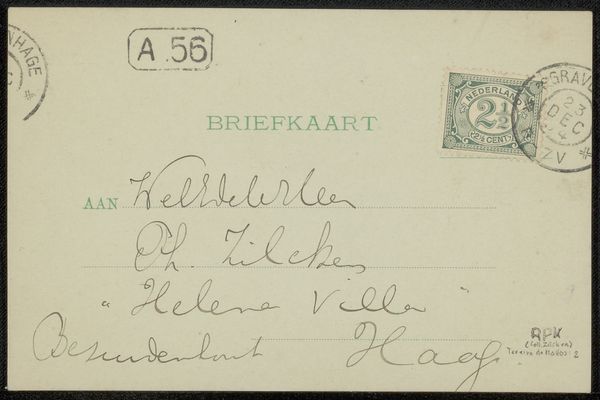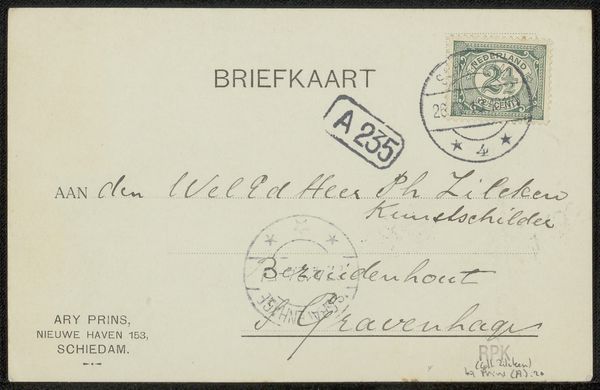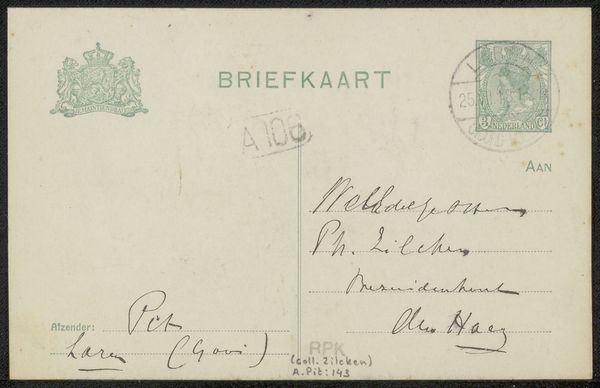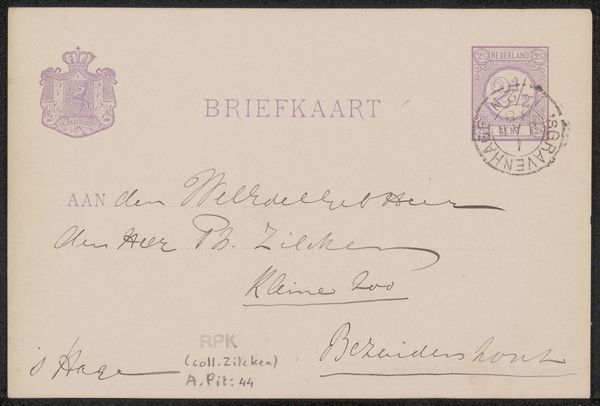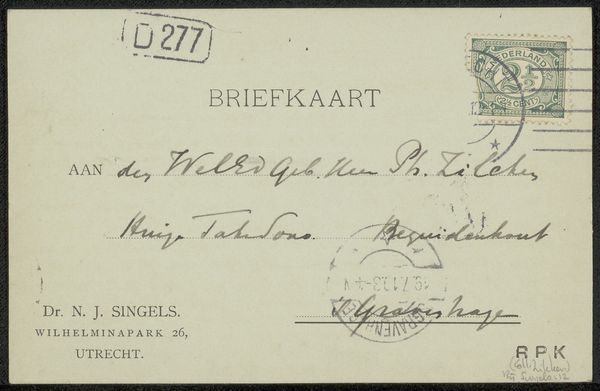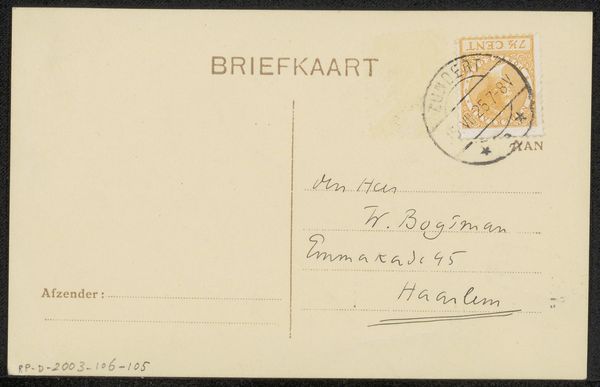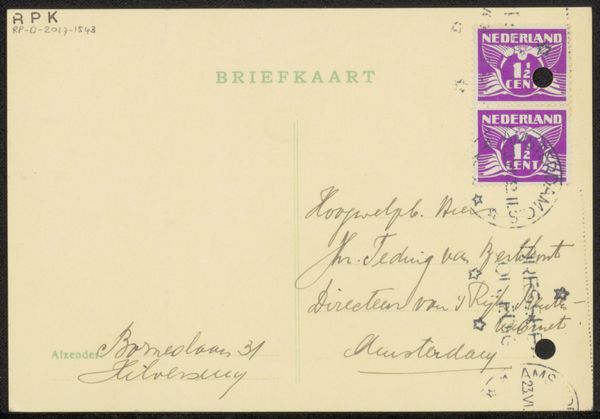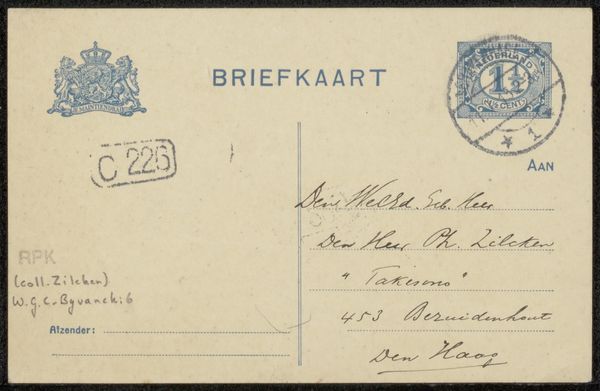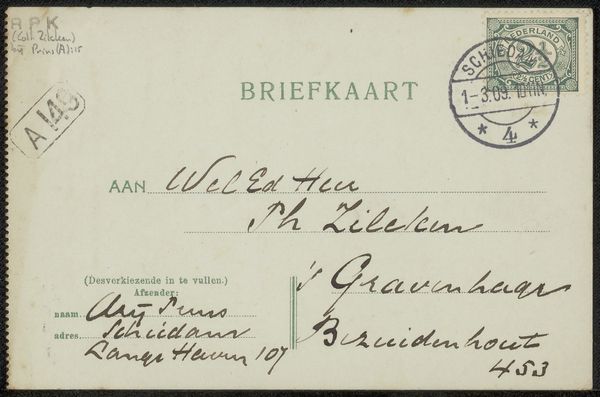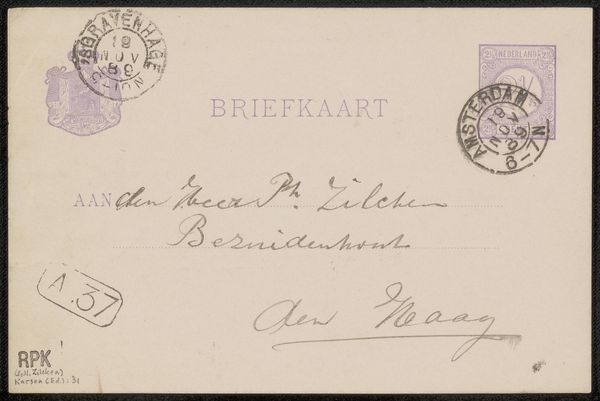
drawing, paper, ink
#
portrait
#
drawing
#
aged paper
#
script typography
#
hand-lettering
#
hand drawn type
#
feminine typography
#
hand lettering
#
paper
#
ink
#
hand-drawn typeface
#
fading type
#
thick font
#
handwritten font
#
calligraphy
Copyright: Rijks Museum: Open Domain
Editor: Here we have Fenna de Meyier's "Briefkaart aan Philip Zilcken," potentially from 1915, crafted with ink on paper. The script has a beautiful, elegant flow. What catches your eye when you consider this piece? Curator: As a historian, I find this object fascinating because it reveals the social networks of artists during a turbulent time. This isn't just a piece of calligraphy; it’s a document that speaks to artistic patronage and communication amidst the backdrop of World War I. How do artists like de Meyier maintain their practice, their visibility, and support during a war? Consider Zilcken’s role – was he a patron, a fellow artist, a critic? The "Briefkaart," the "postcard" itself, becomes a vital, material link. Editor: That's a very insightful perspective! I was focused on the aesthetics. What does the handwritten aspect convey beyond just the practical information of a postcard? Curator: Precisely. The *hand*, not mechanical reproduction, offers a glimpse into the persona. The very act of sending this, carefully penned, reflects a social value. Calligraphy, especially in a pre-digital age, indicates a certain education and refinement. Did Zilcken save this piece? Its preservation, even survival, then becomes its own cultural narrative. Why save *this* card? Editor: So it's less about the individual words, and more about the gesture and its place in that moment and afterward? It makes me wonder what the front of the postcard looked like, what image it carried and whether its combination with this text adds additional or contrasting meaning! Curator: Exactly! The front of that postcard could offer further hints. Considering all these tiny aspects gives a larger, broader perspective of its purpose. And, perhaps it speaks to the very nature of artistic dialogue throughout history. Editor: That shifts my thinking quite a bit. Thanks! Now I’m seeing more than just beautiful handwriting.
Comments
No comments
Be the first to comment and join the conversation on the ultimate creative platform.

